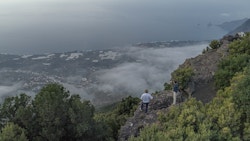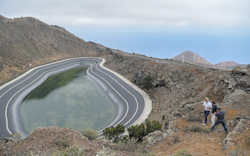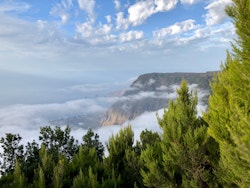El Hierro, a pioneer island in the energy transition
Just like for a boat, the question of energy on an island is a condition that determines the very existence of modern human life. It is the reason why their inhabitants and passengers are often much more aware of their energy consumption compared to their mainland counterparts. This is the case on El Hierro, which is among the role-models in the field of island energy autonomy through a mix of renewable sources.

The island is powered by a mix of wind and hydro-electric energy
Known as the ‘Iron Island’ due to its volcanic origin, El Hierro possesses a power station, Gorona del Viento, which combines two energy sources: wind and water. The objective of coupling these two sources is to fulfil all the energy requirements of the region without suffering from the fluctuations of wind. Equipped with 5 turbines and two basins, these two plants thus ensure a constant production of energy with a capacity of 11.5 megawatts each, which are necessary for the energy requirements of an island of 268 sq km and a population of 10,600. This production has made the island the first in the world to be more than 70% self-sufficient in renewable energy since 2014.
El Hierro listed as a UNESCO biosphere reserve
Biosphere reserves are sites that have been recognised by UNESCO within the framework of its Man and Biosphere Programme, where, thanks to the efforts of the local populations, government support and the implementation of scientific knowledge, they have known how to reconcile the conservation of biodiversity and sustainable development.
Indeed, the desire for a lifestyle that respects nature is one of the main values that has encouraged Tomas Padron, the founder of the Gorona del Viento plant, to lead this project. The man, who can be considered as the father of energy transition on El Hierro, talked with Jérôme and Victorien during their stay on the island, sharing the secrets of the project with them.

Energy Observer in El Hierro, Spain
The Fountain tree, a source of inspiration
The inhabitants of El Hierro have inherited this desire to live in harmony with nature from their ancestors, inspired by a mythical tree: the Garoé. Known as the Holy Tree or the Fountain Tree, it is the emblem of the island and appears on its coat of arms. It once served the Guanche aborigines as a fountain tree from which they collected large quantities of water thanks to the condensation of the mists and fog on the leaves of the tree’s canopy. This water ‘fountain’ thus enabled the entire population of the island to fulfil its needs, naturally becoming the symbol for the use of water and wind as a source of energy. This fine example of innovation reminds us that it is sometimes necessary for us to go back to our sources.
A highlight of the ‘Odyssey for the future’
The visit of the island and meeting with the stakeholders of its energy transition were key moments for Victorien and Jérôme’s adventure, during this first year of navigation. An unforgettable moment that you can discover in 2018 in the ‘Odyssey for the Future’ documentary series that will be broadcast on Planète+.

Energy Observer in El Hierro, Spain